Showing 1–16 of 43 results
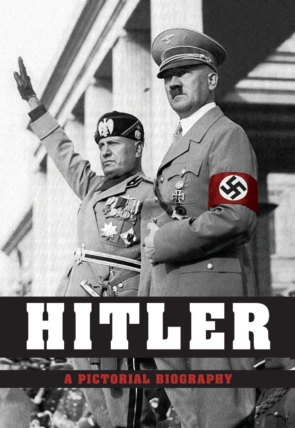
Hitler A Pictoral History Free Book PDF
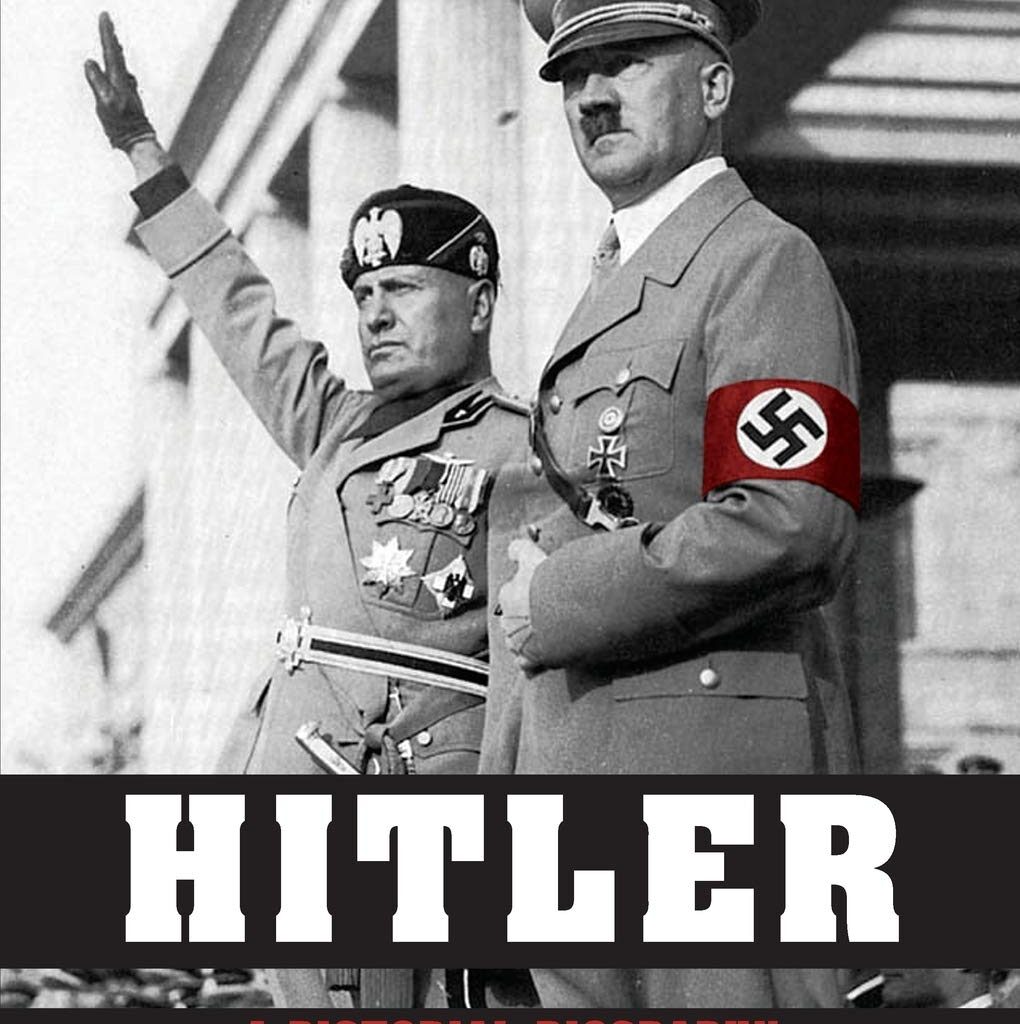
Only registered users can download this book.
Please Login/Register first.
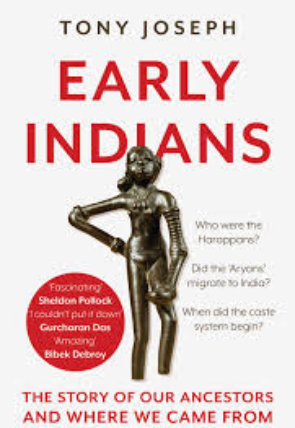
EARLY INDIANS AND THE STORIES OF OUR ANCESTORS AND WHERE WE CAME FROM 2021 EDITIONFREE PDF

Early Indians And The Stories of Our Ancestors and Where We Came From 2021 Edition Free PDF
DESCRIPTION OF BOOK
A 2018 non-fiction book written by Indian journalist Tony Joseph, that focuses on the ancestors of people living today in South Asia. Joseph goes 65,000 years into the past – when anatomically modern humans (Homo sapiens), first made their way from Africa into the Indian subcontinent. The book relies on research findings from six major disciplines – history, archaeology, linguistics, population genetics, philology and epigraphy, and includes path-breaking ancient DNA research of recent years.
The book also relies on the extensive study titled “The Genomic Formation of Central and South Asia”, co-authored by 92 scientists from around the world and co-directed by geneticist David Reich of Harvard Medical School, in which ancient DNA was used. The book was later released in different languages like Tamil, Hindi, Oriya, Telugu, Marathi, Malayalam, Gujarati etc.
WHAT WILL YOU FIND IN THIS BOOK ?
Who are we Indians?
Where did we come from?
Many of us believe our ancestors have lived in South Asia since ‘time immemorial’. But, as it turns out, ‘time immemorial’ may not have been all that long ago.
To tell us the story of our ancestry, journalist Tony Joseph goes 65,000 years into the past – when a band of modern humans, or Homo sapiens, first made their way from Africa into the Indian subcontinent. As Joseph unravels our history using the results of genetics and other research, he takes head-on some of the most controversial and uncomfortable questions of Indian history: Who were the Harappans? Did the ‘Aryans’ really migrate to India? Are North Indians genetically different from South Indians? Are Scheduled Tribes genetically distinct from the rest of the population?
This book relies heavily on path-breaking DNA research of recent years. But it also presents archaeological and linguistic evidence – all in an entertaining and highly readable manner. A hugely significant book, Early Indians authoritatively and bravely puts to rest several ugly debates on the ancestry of modern Indians. It not only shows us how the modern Indian population came to be composed as it is, but also reveals an undeniable and important truth about who we are: we are all migrants. And we are all mixed.
QUESTIONS ANSWERED BY THIS BOOK ?
Who are we Indians ? Where did we come from ? Many of us believe our ancestors have lived in South Asia since ‘time immemorial’. But, as it turns out, ‘time immemorial’ may not have been all that long ago. To tell us the story of our ancestry, journalist Tony Joseph goes 65,000 years into the past—when a band of modern humans, or Homo sapiens, first made their way from Africa into the Indian subcontinent.
Citing recent DNA evidence, he traces the subsequent large migrations of modern humans into India—of agriculturalists from Iran between 7000 and 3000 BCE and pastoralists from the Central Asian Steppe between 2000 and 1000 BCE, among others.
As Joseph unravels our history using the results of genetic and other research, he takes head-on some of the most controversial and uncomfortable questions of Indian history: Who were the Harappans? Did the ‘Aryans’ really migrate to India? Are North Indians genetically different from South Indians? And are the various castes genetically distinct groups?
This book relies heavily on path-breaking DNA research of recent years. But it also presents earlier archaeological and linguistic evidence—all in an entertaining and highly readable manner. A hugely significant book, Ancient Indians authoritatively and bravely puts to rest several ugly debates on the ancestry of modern Indians. It not only shows us how the modern Indian population came to be composed as it is, but also reveals an undeniable and important truth about who we are: we are all migrants. And we are all mixed.
Only registered users can download this book.
Please Login/Register first.

INCREDIBLE HISTORY OF INDIA’S GEOGRAPHY 2021 EDITION BOOK FREE PDF

INCREDIBLE HISTORY OF INDIA’S GEOGRAPHY 2021 EDITION BOOK FREE PDF
DESCRIPTION OF BOOK :-
Maps and mountains, lions and tigers, rivers and oceans-all sorts of things you didn’t know about India’s geography
Could you be related to a blond Lithuanian? What if ostriches once roamed in India? Did you know that India is the only country that has both lions and tigers? Who found out how tall Mt Everest is?
If you’ve ever wanted to know the answers to questions like these, this is the book for you. In here you will discover various things you never expected, such as the fact that we still greet each other like the Harappans did or that people used to think India was full of one-eyed giants. And sneakily you’ll also know more about India’s history and geography by the end of it. Full of quirky pictures and crazy trivia, this book takes you on a fantastic journey through the incredible history of India’s geography.
Could you be related to a blonde Lithuanian? Did you know that India is the only country that has both lions and tigers? Who found out how tall Mt Everest is? If you’ve ever wanted to know the answers to questions like these, this is the book for you.
In here you will find various things you never expected, such as the fact that we still greet each other like the Harappans did and that people used to think India was full of one-eyed giants. And, sneakily, you’ll also know more about India’s history and geography by the end of it. Full of quirky pictures and crazy trivia, this book takes you on a fantastic journey through the incredible history of India’s geography.
The Incredible History of India’s Geography by Sanjeev Sanyal with Sowmya Rajendran, published by Puffin, is one of those magical books which manages to convert historical facts and figures into an interesting read with almost a story like feel to it.
The book explores the journey of the making of India from the ancient times to the current states wedding history with the geographical boundaries of India. The book tells us how ccivilizations flourished and died in India, how different kings invaded to conquer India, what kind of trade routes exist
Only registered users can download this book.
Please Login/Register first.
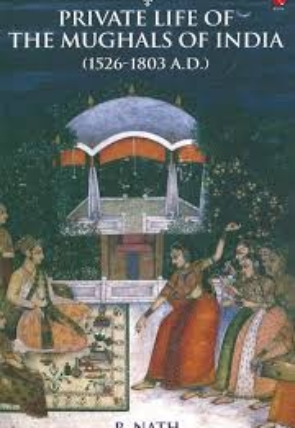
PRIVATE LIFE OF THE MUGHALS OF INDIA 2021 EDITION FREE BOOK PDF

PRIVATE LIFE OF THE MUGHALS OF INDIA 2021 EDITION FREE BOOK PDF
DESCRIPTION OF THIS BOOK :-
The opulent, sometimes scandalous, private lives of the Mughals of India is brought to life in this book. The text covers various aspects of their lifestyles, such as their food and drinks; clothes and ornaments; perfumes and incense; addictions and intoxicants; amusements and pastimes; rituals of circumcision; marriage and harem life. This well-written book with colour illustrations and photographs will be a delight to the lay reader as well as the serious scholar.
Titled as it is, the book deals with the little known, but much scandalized, private life of the Mughals who ruled from 1526, practically to 1803 when the British captured Delhi and Agra, their nerve-centres, from them. This included the period of the reign of three great Mughals, viz. Akbar (1556-1605), Jahangir (1505-27) and Shah Jehan (1628-58), of little more than a century.
They possessed not only fabulous wealth, but also the vision to found a culture-state, in the real sense of the term. Planting it in the soil as naturally as a banyan tree, they institutionalized their life, as much as their government. The former, almost completely shrouded in mystery, offers one of the most interesting aspects of medieval Indian history and culture.
Unfortunately, the official record of their day to day living which was scrupulously maintained has been lost to us.
It has been generally believed that the contemporary Persian chroniclers, living under the court patronage as they did, have blacked out this aspect of their history. Consequently, the modern historians, who have ventured to write on this subject, i. e. Mughal harem life, have almost entirely depended and drew on accounts of foreign travellers. These European travellers visited the Mughal empire contemporarily and some of them were received by the Great Mughals. But they had limitations of language, culture and accessibility to correct information. They viewed the things from the point of view of European civilization and were easily tempted to misinterpret, exaggerate and scandalize. Their narratives on Mughal life have, this, come up to be a strange mixture of a tiny fact with a mountain of fiction. Our historians who, unfortunately relied on their travelogues, have also erred in a large measure and have tremendously contributed to the misunderstanding and misrepresentation of the Mughal lifestyle. It has been unduly romanticized.
Truly, the Persian chroniclers were either prevented from knowing what happened within the four walls of the Mughal harem owing to strict protocol and Purdah, or even when they had access to this knowledge, they did not have the courage to write on this sensitive subject. The Mughal life, consequently, remained a closely guarded secret.
However, the human nature being what it is, these contemporary intellectuals’ sense of wonder led them to leave clever references to their private life in a word or two, casually, in historical narratives, and one has just to read between the lines. A lifetime’s rapport with these sources is needed to unravel these mysteries and, towards the end of it, one is simply amazed to see that there is probably nothing which was not known and which has not been recorded.
Thus, for example, when the historian Badaoni stated, on the eve of Akbar’s marriage with the princess of Jaisalmer, that she ‘obtained eternal glory by entering the female apartments’, he artfully recorded that the Mughals did not practice divorce, or separation even by death, and they married for ‘eternity’, which is how the institution of Sohagpura (The House of Eternal matrimony) came into being. One has just to live up with them to be able to write an authentic history on this abstract subject.
Thus does it cover such aspects of their living as food and drinks; clothes and ornaments; perfumes and incenses; addictions and intoxicants; amusement and pastimes; floor-coverings, furniture and lighting; and, of course, their sex life to which a few chapter have been devoted. How the Mughal king managed to keep a few hundred young and beautiful women attached to his bed is as enlightening a study as it is interesting.
Though based on research, it is written without its jargon, is a simple, readable form, for the general reader.
Only registered users can download this book.
Please Login/Register first.
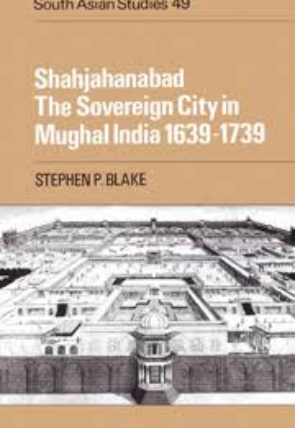
SHAHJAHANABAD THE SOVEREIGN CITY IN MUGHAL INDIA 1991 FREE PDF BOOK

SHAHJAHANABAD : THE SOVEREIGN CITY IN MUGHAL INDIA
DESCRIPTION OF THIS BOOK :-
From 1400 to 1750, Asian capital cities were often ruled in such a way that they became symbols of the power and influence their emperors extended over their states at large. These ‘sovereign cities’ became the empire in miniature. Shahjahanabad is the first study of a pre-modern Indian city (Old Delhi) as a sovereign city. Stephen Blake explores the way in which the emperors’ and nobles’ palaces and mansions dominated the landscape; how cultural life revolved around that of the emperors and their families; and how the households of the great men also dominated the urban economy and controlled a large percentage of state revenue. This study thus illuminates how Asian capitals were not the great amorphous agglomerations described by Marx and Weber. Instead they were urban communities with their own distinctive style and character, dependent on a particular kind of state organization.
Old Delhi or Purani Dilli is an area part of the greater city of Delhi, India. It was founded as a walled city named Shahjahanabad in 1639, when Shah Jahan (the Mughal emperor at the time) decided to shift the Mughal capital from Agra. The construction of the city was completed in 1648, and it remained the capital of the Mughal Empire until its fall in 1857, when the British Raj took over as paramount power in India. It was once filled with mansions of nobles and members of the royal court, along with elegant mosques and gardens.
It serves as the symbolic heart of metropolitan Delhi and is known for its bazaars, street food, shopping locations and its Islamic architecture; Jama Masjid being the most notable example, standing tall in the midst of the old city. Only a few havelis are left and maintained.
The site of Shahjahanabad is north of earlier settlements of Delhi. Its southern part overlaps some of the area that was settled by the Tughlaqs in the 14th century when it was the seat of Delhi Sultanate. The sultanates ruled from Delhi between 1206 and 1526, when the last was replaced by the Mughal dynasty. The five dynasties were the Mamluk dynasty (1206–90), the Khalji dynasty (1290–1320), the Tughlaq dynasty (1320–1414), the Sayyid dynasty (1414–51), Lodi dynasty (1451–1526) and the Suri dynasty (1540-1556)
Delhi remained an important place for the Mughals, who built palaces and forts. Most importantly, Shah Jahan had the walled city built from 1638 to 1649, containing the Lal Qila and the Chandni Chowk. Delhi was one of the original twelve subahs (imperial Mughal provinces), renamed Shahjahanabad in 1648, bordering Awadh, Agra, Ajmer, Multan and Lahore subahs. Daryaganj had the original cantonment of Delhi, after 1803, where a native regiment of Delhi garrison was stationed, which was later shifted to Ridge area. East of Daryaganj was Raj ghat Gate of the walled city, opening at Raj Ghat on Yamuna River. The first wholesale market of Old Delhi opened as the hardware market in Chawri Bazaar in 1840, the next wholesale market was that of dry fruits, spices and herbs at Khari Baoli, opening in 1850. The Phool Mandi (Flower Market) of Daryaganj was established in 1869, and even today, despite serving a small geographical area, it is of great importance due to dense population.
After the fall of the Mughal Empire post 1857 revolt, the British Raj shifted the capital of British controlled territories in India to a less volatile city, Calcutta in Bengal, where it remained until 1911. After the announcement of the change, the British developed Lutyens’ Delhi (in modern New Delhi) just south-west of Shahjahanabad.
At this point, the older city started being called Old Delhi, as New Delhi became the seat of a national government. It was formally inaugurated as such in 1931.
Only registered users can download this book.
Please Login/Register first.
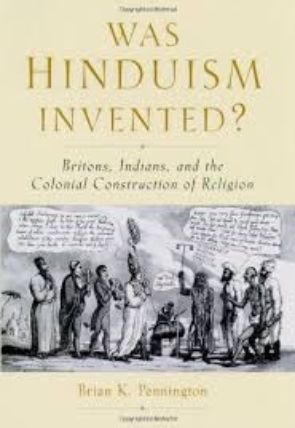
WAS HINDUISM INVENTED FREE PDF BOOK 2021 EDITION

WAS HINDUISM INVENTED FREE PDF BOOK
Drawing on a large body of previously untapped literature, including documents from the Church Missionary Society and Bengali newspapers, Brian Pennington offers a fascinating portrait of the process by which “Hinduism” came into being. He argues against the common idea that the modern construction of religion in colonial India was simply a fabrication of Western Orientalists and missionaries. Rather, he says, it involved the active agency and engagement of Indian authors as well, who interacted, argued, and responded to British authors over key religious issues such as image-worship, sati, tolerance, and conversion.
Drawing on a large body of previously untapped literature, including documents from the Church Missionary Society and Bengali newspapers, Brian Pennington offers a fascinating portrait of the process by which “Hinduism” came into being. He argues against the common idea that the modern construction of religion in colonial India was simply a fabrication of Western Orientalists and missionaries. Rather, he says, it involved the active agency and engagement of Indian authors as well, who interacted, argued, and responded to British authors over key religious issues such as image-worship, sati, tolerance, and conversion.
HINDUISM :-
Hinduism is an Indian religion and dharma, or way of life. It is the world’s third-largest religion, with over 1.2 billion followers, or 15–16% of the global population, known as Hindus. The word Hindu is an exonym, and while Hinduism has been called the oldest religion in the world, many practitioners refer to their religion as Sanātana Dharma (Sanskrit: सनातन धर्म, lit. ”the Eternal Dharma”), which refers to the idea that its origins lie beyond human history, as revealed in the Hindu texts. Another, though less fitting, self-designation is Vaidika dharma, the ‘dharma related to the Vedas.
Hinduism is a diverse system of thought marked by a range of philosophies and shared concepts, rituals, cosmological systems, pilgrimage sites, and shared textual sources that discuss theology, metaphysics, mythology, Vedic yajna, yoga, agamic rituals, and temple building, among other topics. Prominent themes in Hindu beliefs include the four Puruṣārthas, the proper goals or aims of human life; namely, dharma (ethics/duties), artha (prosperity/work), kama (desires/passions) and moksha (liberation/freedom from the passions and the cycle of death and rebirth), as well as karma (action, intent and consequences) and saṃsāra (cycle of death and rebirth). Hinduism prescribes the eternal duties, such as honesty, refraining from injuring living beings (Ahiṃsā), patience, forbearance, self-restraint, virtue, and compassion, among others. Hindu practices include rituals such as puja (worship) and recitations, japa, meditation (dhyāna), family-oriented rites of passage, annual festivals, and occasional pilgrimages. Along with the practice of various yogas, some Hindus leave their social world and material possessions and engage in lifelong Sannyasa (monasticism) in order to achieve moksha.
Hindu texts are classified into Śruti (“heard”) and Smṛti (“remembered”), the major scriptures of which are the Vedas, the Upanishads, the Purānas, the Mahābhārata, the Rāmāyana, and the Āgamas. There are six āstika schools of Hindu philosophy, who recognise the authority of the Vedas, namely Sānkhya, Yoga, Nyāya, Vaisheshika, Mimāmsā and Vedānta. While the Puranic chronology presents a genealogy of thousands of years, starting with the Vedic rishis, scholars regard Hinduism as a fusion[note 6] or synthesis of Brahmanical orthopraxy with various Indian cultures, having diverse roots and no specific founder. This Hindu synthesis emerged after the Vedic period, between c. 500–200 BCE and c. 300 CE, in the period of the Second Urbanisation and the early classical period of Hinduism, when the Epics and the first Purānas were composed. It flourished in the medieval period, with the decline of Buddhism in India.
Currently, the four largest denominations of Hinduism are Vaishnavism, Shaivism, Shaktism, and Smartism. Sources of authority and eternal truths in the Hindu texts play an important role, but there is also a strong Hindu tradition of questioning authority in order to deepen the understanding of these truths and to further develop the tradition. Hinduism is the most widely professed faith in India, Nepal and Mauritius. Significant numbers of Hindu communities are found in Southeast Asia including in Bali, Indonesia, the Caribbean, North America, Europe, Oceania, Africa, and other regions.
Only registered users can download this book.
Please Login/Register first.
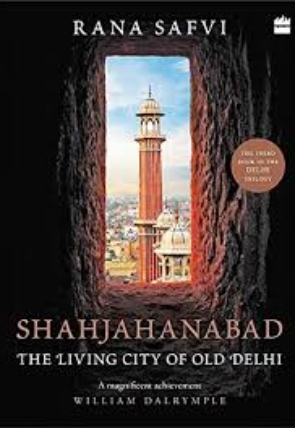
SHAHJAHANABAD THE LIVING CITY OF OLD DELHI 2021 EDITION FREE BOOK PDF

SHAHJAHANABAD THE LIVING CITY OF OLD DELHI 2021 FREE PDF
SHAHJAHANABAD : THE LIVING CITY OF OLD DELHI :-
SHAHJAHANABAD : THE LIVING CITY OF OLD DELHI.What is today the overcrowded, neglected city of Old Delhi was once the magnificent capital of the Mughal Empire. At its heart was the spectacular Qila-e-Mubarak, now known as the Red Fort. Commissioned by Emperor Shah Jahan in 1639, the beautiful city of Shahjahanabad was built around the spectacular Qila-e-Mubarak (Red Fort), on the banks of the Yamuna.
Almost a decade later, in 1648, Shah Jahan entered through the river gate and celebrated the completion of this ‘paradise on earth’ filled with gardens, palaces, water bodies, mosques and temples. About two hundred years later, the last Mughal emperor, Bahadur Shah Zafar, left the fort by the same gate after the failed Mutiny against the British in 1857.
Subsequently, both the fort and the city fared badly, as they faced the wrath of the British.The final instalment in Rana Safvi’s informative, illustrated series of books on Delhi, Shahjahanabad: The Living City of Old Delhi describes the magnificence of the fort and the city through its buildings that are a living monument to the grandeur and strife of the past.
SHAHJAHANABAD :-
The site of Shahjahanabad is north of earlier settlements of Delhi. Its southern part overlaps some of the area that was settled by the Tughlaqs in the 14th century when it was the seat of Delhi Sultanate.
The sultanates ruled from Delhi between 1206 and 1526, when the last was replaced by the Mughal dynasty. The five dynasties were the Mamluk dynasty (1206–90), the Khalji dynasty (1290–1320), the Tughlaq dynasty (1320–1414), the Sayyid dynasty (1414–51), Lodi dynasty (1451–1526) and the Suri dynasty (1540-1556)
Delhi remained an important place for the Mughals, who built palaces and forts. Most importantly, Shah Jahan had the walled city built from 1638 to 1649, containing the Lal Qila and the Chandni Chowk.
Delhi was one of the original twelve subahs (imperial Mughal provinces), renamed Shahjahanabad in 1648, bordering Awadh, Agra, Ajmer, Multan and Lahore subahs. Daryaganj had the original cantonment of Delhi, after 1803, where a native regiment of Delhi garrison was stationed, which was later shifted to Ridge area. East of Daryaganj was Raj ghat Gate of the walled city, opening at Raj Ghat on Yamuna River.
The first wholesale market of Old Delhi opened as the hardware market in Chawri Bazaar in 1840, the next wholesale market was that of dry fruits, spices and herbs at Khari Baoli, opening in 1850. The Phool Mandi (Flower Market) of Daryaganj was established in 1869, and even today, despite serving a small geographical area, it is of great importance due to dense population.
After the fall of the Mughal Empire post 1857 revolt, the British Raj shifted the capital of British controlled territories in India to a less volatile city, Calcutta in Bengal, where it remained until 1911. After the announcement of the change, the British developed Lutyens’ Delhi (in modern New Delhi) just south-west of Shahjahanabad. At this point, the older city started being called Old Delhi, as New Delhi became the seat of a national government. It was formally inaugurated as such in 1931.
It is approximately shaped like a quarter cìrcle, with the Red Fort as the focal point. The old city was surrounded by a wall enclosing about 1,500 acres (6.1 km2), with 14 gates:[10]
- Nigambodh Gate: northeast, leading to historic Nigambodh Ghat on the Yamuna River
- Kashmiri Gate: north
- Mori Gate: north
- Kabuli gate: west
- Lahori gate: west close to the Sadar Railway station, Railway Colony, including the tomb of Syed Abdul Rehman Jilani Dehlvi.[11][12]
- Ajmeri Gate: southwest, leading to Ghaziuddin Khan’s Madrassa and Connaught Place, a focal point in New Delhi
- Turkman Gate: southwest, close to some pre-Shahjahan remains which got enclosed within the walls, including the tomb of Shah Turkman Bayabani.
- Delhi Gate: south leading to Feroz Shah Kotla and what was then older habitation of Delhi.
The surrounding walls, 12 feet (3.7 m) wide and 26 feet (7.9 m) tall, originally of mud, were replaced by red stone in 1657. In the Mughal period, the gates were kept locked at night. The walls have now largely disappeared, but most of the gates are still present. The township of old Delhi is still identifiable in a satellite image because of the density of houses.
The Khooni Darwaza, south of Delhi Gate and just outside the walled city, was originally constructed by Sher Shah Suri.
Only registered users can download this book.
Please Login/Register first.
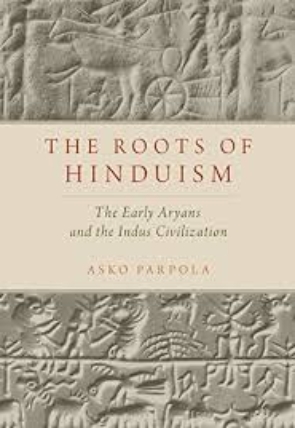
THE ROOTS OF HINDUISM 2021 EDITION FREE BOOK PDF

Only registered users can download this book.
Please Login/Register first.
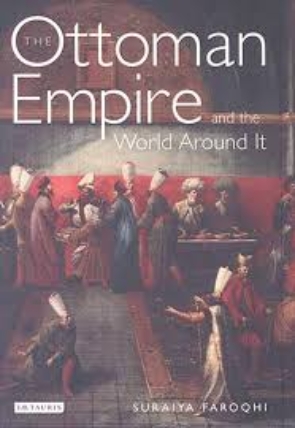
THE OTTOMAN EMPIRE 2021 EDITION FREE BOOK PDF

THE OTTOMAN EMPIRE 2021 EDITION FREE BOOK PDF
OTTOMAN EMPIRE :-
The Ottoman Empire (/ˈɒtəmən/; Ottoman Turkish: دولت عليه عثمانيه Devlet-i ʿAlīye-i ʿOsmānīye, lit. ’The Sublime Ottoman State’; Turkish: Osmanlı İmparatorluğu or Osmanlı Devleti; French: Empire ottoman) was a state that controlled much of Southeastern Europe, Western Asia, and Northern Africa between the 14th and early 20th centuries. It was founded at the end of the 13th century in northwestern Anatolia in the town of Söğüt (modern-day Bilecik Province) by the Turkoman tribal leader Osman I.
After 1354, the Ottomans crossed into Europe and with the conquest of the Balkans, the Ottoman beylik was transformed into a transcontinental empire. The Ottomans ended the Byzantine Empire with the conquest of Constantinople in 1453 by Mehmed the Conqueror.
Under the reign of Suleiman the Magnificent, the Ottoman Empire marked the peak of its power and prosperity as well as the highest development of its government, social, and economic systems. At the beginning of the 17th century, the empire contained 32 provinces and numerous vassal states. Some of these were later absorbed into the Ottoman Empire, while others were granted various types of autonomy over the course of centuries.
With Constantinople (modern-day Istanbul) as its capital and control of lands around the Mediterranean Basin, the Ottoman Empire was at the centre of interactions between the Eastern and Western worlds for six centuries. While the empire was once thought to have entered a period of decline following the death of Suleiman the Magnificent, this view is no longer supported by the majority of academic historians. The empire continued to maintain a flexible and strong economy, society and military throughout the 17th and for much of the 18th century. However, during a long period of peace from 1740 to 1768, the Ottoman military system fell behind that of their European rivals, the Habsburg and Russian empires. The Ottomans consequently suffered severe military defeats in the late 18th and early 19th centuries. The successful Greek War of Independence concluded with decolonization following the London Protocol (1830) and Treaty of Constantinople (1832). This and other defeats prompted the Ottoman state to initiate a comprehensive process of reform and modernization known as the Tanzimat. Thus, over the course of the 19th century, the Ottoman state became vastly more powerful and organized internally, despite suffering further territorial losses, especially in the Balkans, where a number of new states emerged.
The Committee of Union and Progress (CUP) established the Second Constitutional Era in the Young Turk Revolution in 1908, turning the Empire into a constitutional monarchy, which conducted competitive multi-party elections. A few years later, the now radicalized and nationalistic Union and Progress Party took over the government in the 1913 coup d’état, creating a one party regime. The CUP allied the Empire with Germany hoping to escape from the diplomatic isolation which had contributed to its recent territorial losses, and thus joined World War I on the side of the Central Powers. While the Empire was able to largely hold its own during the conflict, it was struggling with internal dissent, especially with the Arab Revolt in its Arabian holdings. During this time, genocide was committed by the Ottoman government against the Armenians, Assyrians, and Greeks. The Empire’s defeat and the occupation of part of its territory by the Allied Powers in the aftermath of World War I resulted in its partitioning and the loss of its Middle Eastern territories, which were divided between the United Kingdom and France. The successful Turkish War of Independence led by Mustafa Kemal Atatürk against the occupying Allies led to the emergence of the Republic of Turkey in the Anatolian heartland and the abolition of the Ottoman monarchy.
Only registered users can download this book.
Please Login/Register first.
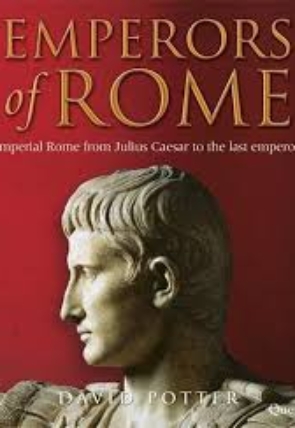
THE EMPERORS OF ROME 2021 EDITION FREE BOOK PDF

THE EMPERORS OF ROME 2021 EDITION FREE PDF BOOK :-
THE EMPERORS OF ROME FREE PDF BOOK DESCRIPTION :-
Written for a general audience, The Emperors of Rome by David Potter traces the rise and the fall of the Roman Empire. Giving prominence to emperors who played a major role in the Roman history, the narration mentions all emperors to have asserted the title of Augustus, while recounting briefly the socio-economical and religious background of the empire through the ages.
The Emperors of Rome: The Story of Imperial Rome from Julius Caesar to the Last Emperor, by David Potter, tells the story of all the emperors of Rome from Augustus Caesar to Romulus Augustulus. Narrated with a general audience in mind, David Potter, Professor of Greek and Latin in Ancient History at The University of Michigan, starts off his narration with a brief background to Roman emperors; an account on what was needed to become an emperor of Rome and what role they played as a political as well as a social figure. These “qualifications” needed to be the emperor, mentioned in the introductory note are being revised as the book progresses with the changes in the form and the function of a Roman emperor.
The story proper starts in the third chapter with a brief account on the first civil war between Marius and Sulla and the events that unfolded thereafter leading to the rise of Augustus Caesar. From there on, David Potter tells the story of one emperor after the other, describing in detail what each emperor had to do to get and remain in power as well as the relationships that existed among the emperors and their successors. This style of narration gives the reader an interesting view of the Roman political arena and what it took to survive it.
In the second part of the book, Potter pauses the main narration to focus briefly on the socio-economical atmosphere of Rome at the time. He describes the political hierarchy, methods of taxation, the hierarchy of the Roman army, religion, and citizen life. This adds a different dimension to the book and saves it from being a highly political, dry narration of one emperor after the other and better enable the reader to get a larger picture of the Roman Empire.
The writer also gives prominence to other important personalities of the times such as the Praetorian Guard, military commanders, wives and mothers of emperors, and in few cases empresses in their right who played a major role in the contemporary politics.
In the concluding part of the narration, Potter emphasizes the lack of cooperation between the Eastern and the Westerns Roman Empires and gives introductions to the many “barbarians” who threatened the empire resulting in its eventual fall.
The book is subdivided into many chapters each with its title hinting at its content. Some would find this subdivision helpful but for some, it could be a disturbance to the continuous narration of the story. David Potter closely follows the accounts on Roman history by ancient writers such as Pliny the Younger, Tacitus, or Cassius Dio, and later historians such as Edward Gibbon. He brings up their opinions about certain matters and gives his own as well, creating a conversation across time.
I would highly recommend this book to anyone who wants to get an overview of the rise and fall of the Roman Empire and its social and economic changes across time. While this could be not so informative for scholars of classics, the book certainly is a treasure to those who are just entering the world of classics.
Only registered users can download this book.
Please Login/Register first.

THE QUEST FOR THE ORIGIN OF VEDIC CULTURE 2021 EDITION FREE BOOK PDF

THE QUEST FOR THE ORIGIN OF VEDIC CULTURE 2021 EDITION FREE BOOK PDF
THE QUEST FOR THE ORIGIN OF VEDIC CULTURE 2021 EDITION FREE BOOK PDF DESCRIPTION :-
As a result of the discovery of similarities between Sanskrit and the classical languages of Europe, scholars hypothesized the existence of an early “proto-Indo-European” people who spoke the language from which the other Indo-European speakers evolved. The solution to this Indo-European homeland problem has been one of the most consuming intellectual projects of the last two centuries. At first it was assumed that India was the original home of all the Indo-Europeans.
Soon, however, Western scholars were contending that the Vedic culture of ancient India must have been the by-product of an invasion or migration of “Indo-Aryans” from outside the subcontinent. Over the years, Indian scholars have raised many arguments against this European reconstruction of their nation’s history, yet Western scholars have generally been unaware or dismissive of these voices from India itself. Edwin Bryant offers a comprehensive examination of this ongoing debate, presenting all of the relevant philological, archaeological, linguistic, and historiographical data, and showing how they have been interpreted both to support the theory of Aryan migrations and to contest it.
Bringing to the fore those hitherto marginalized voices that argue against the external origin of the Indo-Aryans, he shows how Indian scholars have questioned the very logic, assumptions, and methods upon which the theory is based and have used the same data to arrive at very different conclusions. By exposing the whole endeavor to criticism from scholars who do not share the same intellectual history as their European peers, Bryant’s work newly complicates the Indo-European homeland quest. At the same time it recognizes the extent to which both sides of the debate have been driven by political, racial, religious, and nationalistic agendas.
VEDIC PERIOD :-
The Vedic period, or Vedic age (c. 1500 – c. 500 BCE), is the period in the late Bronze Age and early Iron Age of the history of India when the Vedic literature, including the Vedas (ca. 1300–900 BCE), was composed in the northern Indian subcontinent, between the end of the Urban Indus Valley Civilisation and a second urbanisation which began in the central Indo-Gangetic Plain c. 600 BCE. The Vedas are liturgical texts which formed the basis of modern day Hinduism, which also developed in the Kuru Kingdom. The Vedas contain details of life during this period that have been interpreted to be historical and constitute the primary sources for understanding the period. These documents, alongside the corresponding archaeological record, allow for the evolution of the Vedic culture to be traced and inferred.
The Vedas were composed and orally transmitted with precision in this period. The Vedic society was patriarchal and patrilineal. Early Indo-Aryans were a Late Bronze Age society centred in the Punjab, organised into tribes rather than kingdoms, and primarily sustained by a pastoral way of life.
Around c. 1200–1000 BCE Vedic culture spread eastward to the fertile western Ganges Plain. Iron tools were adopted, which allowed for the clearing of forests and the adoption of a more settled, agricultural way of life. The second half of the Vedic period was characterised by the emergence of towns, kingdoms, and a complex social differentiation distinctive to India, and the Kuru Kingdom‘s codification of orthodox sacrificial ritual. During this time, the central Ganges Plain was dominated by a related but non-Vedic culture, of Greater Magadha. The end of the Vedic period witnessed the rise of true cities and large states (called mahajanapadas) as well as śramaṇa movements (including Jainism and Buddhism) which challenged the Vedic orthodoxy.
The Vedic period saw the emergence of a hierarchy of social classes that would remain influential. Vedic religion developed into Brahmanical orthodoxy, and around the beginning of the Common Era, the Vedic tradition formed one of the main constituents of “Hindu synthesis“.
Archaeological cultures identified with phases of vedic culture include the Ochre Coloured Pottery culture, the Gandhara grave culture, the black and red ware culture and the Painted Grey Ware culture.
Only registered users can download this book.
Please Login/Register first.
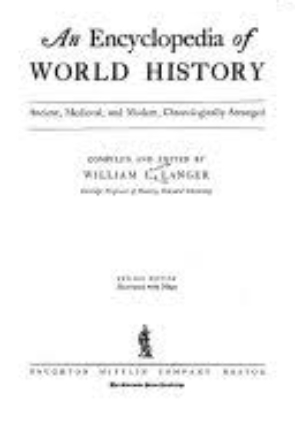
THE ENCYCLOPEDIA OF WORLD HISTORY 2021 EDITION FREE BOOK PDF

THE ENCYCLOPEDIA OF WORLD HISTORY 2021 EDITION FREE BOOK PDF
THE ENCYCLOPEDIA OF WORLD HISTORY DESCRIPTION :-
The Encyclopedia of World History is a classic single-volume work detailing world history. The first through fifth editions were edited by William L. Langer.
The Sixth Edition contained over 20,000 entries and was overseen by Peter N. Stearns.
Renowned historian Peter N. Stearns and thirty prominent historians have combined their expertise over the past ten years to perfect this comprehensive chronology of more than 20,000 entries that span the millennia from prehistoric times to the year 2000. With a unique format that has won it generations of fans, the ENCYCLOPEDIA continues to feature chronological entries grouped by geographic region, allowing readers to get an in-depth view of distinct events along with a virtual time line of human history.
But this new edition is much more than an expansion of a classic; it reflects important recent changes in historical trends and historical thinking. In addition to showcasing traditional facts of national leadership and state power, the Encyclopedia embraces social and cultural developments, non-European history, women’s history, religion, health, economics, technology, and other vital but less often reported aspects of the human drama. Here is a chronicle not only of major political events but of ordinary people, covering shifts in the relationships between men and women, developments in leisure, and demographic currents. And for all periods there are summaries of global developments that cannot be captured in national or regional frameworks.
As editor Stearns notes in his preface, “The world we know historically has greatly changed. The revisions that animate this edition celebrate this change, benefiting from the labors of countless venturesome scholars over the past several decades.” A masterwork whose roots date back to the nineteenth century, this exciting volume belongs at the elbow of every history lover and of anyone who has ever been curious about our constantly changing, remarkably diverse human story.
| Title | The Encyclopedia of World History: Ancient, Medieval, and Modern, Chronologically Arranged |
| Author | Peter N. Stearns |
| Editor | Peter N. Stearns |
| Edition | 6, illustrated |
| Publisher | Houghton Mifflin, 2001 |
| ISBN | 0395652375, 9780395652374 |
| Length | 1243 pages |
Renowned historian Peter N. Stearns and thirty prominent historians have combined their expertise over the past ten years to perfect this comprehensive chronology of more than 20,000 entries that span the millennia from prehistoric times to the year 2000. With a unique format that has won it generations of fans, the ENCYCLOPEDIA continues to feature chronological entries grouped by geographic region, allowing readers to get an in-depth view of distinct events along with a virtual time line of human history. But this new edition is much more than an expansion of a classic; it reflects important recent changes in historical trends and historical thinking. In addition to showcasing traditional facts of national leadership and state power, the Encyclopedia embraces social and cultural developments, non-European history, women’s history, religion, health, economics, technology, and other vital but less often reported aspects of the human drama. Here is a chronicle not only of major political events but of ordinary people, covering shifts in the relationships between men and women, developments in leisure, and demographic currents. And for all periods there are summaries of global developments that cannot be captured in national or regional frameworks.
As editor Stearns notes in his preface, “The world we know historically has greatly changed. The revisions that animate this edition celebrate this change, benefiting from the labors of countless venturesome scholars over the past several decades.” A masterwork whose roots date back to the nineteenth century, this exciting volume belongs at the elbow of every history lover and of anyone who has ever been curious about our constantly changing, remarkably diverse human story.
Only registered users can download this book.
Please Login/Register first.
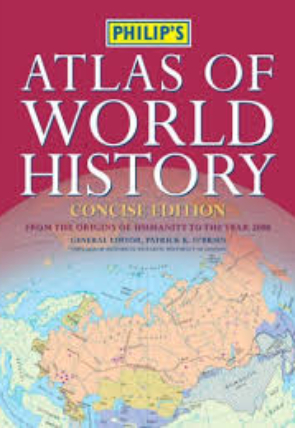
PHILLIPS ATLAS OF THE WORLD HISTORY 2021 EDITION FREE BOOK PDF

PHILLIPS ATLAS OF THE WORLD HISTORY 2021 EDITION FREE BOOK PDF
PHILLIPS ATLAS OF THE WORLD HISTORY FREE BOOK DESCRIPTION :-
A major reference work, Philip’s Atlas of World History – concise edition records the history of human society throughout the world, from prehistory to the year 2005, in 450 specially commissioned colour maps, 200 illustrations, tables and diagrams, and 200,000 words. It has been updated to include recent events across the world, including those in Iraq, Afghanistan, Russia and the former Soviet republics.
The Atlas of World History – concise edition goes beyond the conventional focus on European and American political history to give worldwide coverage of socio-economic, cultural, and religious themes. Due weight is given to regions such as Central and South America, Africa, Asia, and Oceania that are comparatively neglected by many competitor titles.
Commissioned from academic writers with direct involvement in college teaching, and with a foreword and general consultancy by Professor Patrick O’Brien, former Director of the Institute of Historical Research at the University of London, Philip’s Atlas of World History is also highly accessible for the general reader with an interest in world history.
World (human origins to c.ad 500), the Medieval World (c.500-1500), the Early Modern World (c.1500-1770), the Age of Revolutions (c.1770-1914), and the Twentieth Century (from 1914). Each part opens with a two-spread introduction that highlights the main themes of the period and outlines worldwide trends and developments. Following the introduction, individual spreads each examine a particular region over a specified period, with detailed maps, illustrations, and tables, and c.1200 words of text.
Often called the “location bible,” Here Comes The Guide features multitudes of Northern California event sites, including private estates, historic gardens, yachts, museums, wineries, hotels, and many others. Engaging descriptions give readers a clear picture of each place, while details about pricing, services, and amenities help streamline the selection process. Here Comes The Guide also includes over 125 prescreened vendors, such as photographers, caterers, florists, and cake makers, along with tips on how to hire and work with event professionals.
Philip’s Atlas of World History presents the entire story of civilisation in its physical setting, from man’s earliest beginnings to the latest political developments of the twentieth century. It is specially designed to help the reader visualise the great historical themes and turning points of the past, combining maps which graphically depict the scope of these events with text explaining key historical themes and contexts.The book is divided into five sections, each of which contains an introduction which highlights the main themes of the period and outlines its key trends and developments: 1. The Ancient World (human origins to AD500) 2. The Medieval World (500 – 1500) 3. The Early Modern World (c.1500 – 1770) 4. An Age of Revolutions (c.1770 – 1914) 5. The Twentieth Century (from 1914)These five sections contain a total of 135 double-page spreads, each of which portrays key developments in a world region over a specific period of time.Each spread features brand-new, highly-informative colour maps created by Philip’s renowned cartographers, together with complementary text which discusses and explains the larger historical, political, geographical, cultural, social and religious themes behind each topic. The book also contains a wealth of additional historical information, including a detailed 22-page time chart, a 20-page gazetteer of historical places, concise biographies of significant figures and an extensive 20-page index Successfully combining history and geography, Philip’s Atlas of World History gives the reader a fascinating, accessible and visually-exciting picture of historical events and their impact on the world we live in today.
Since it is the start of the third millennium, the University of London saw it fit to produce a new atlas of world history.
This book is downloadable in PDF Format.
Only registered users can download this book.
Please Login/Register first.
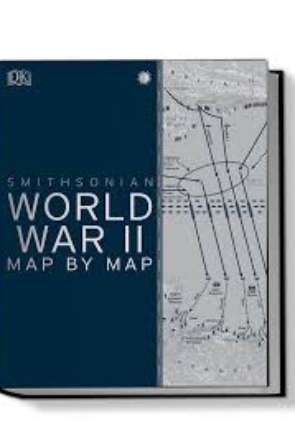
WORLD WAR II MAP BY MAP 2021 EDITION FREE BOOK PDF

WORLD WAR II MAP BY MAP 2021 EDITION FREE BOOK PDF
WORLD WAR II MAP BY MAP FREE BOOK DESCRIPTION :-
The deadliest war in history brought to life through bold, easy-to-grasp maps
In this stunning visual history ebook, purpose-made maps reveal the full story of the Second World War. From the rise of the Axis powers to the aftermath of the atomic bomb attack on Hiroshima, this ebook shows how each step of the action took place. Each map is full of detail, charting the progress of the key events of World War II on land, sea, and air, including the Dunkirk evacuation, the attack on Pearl Harbor, the D-Day landings, the siege of Stalingrad, and the war in the Pacific.
As well as purpose-made maps, historical maps from both Allied and Axis countries give compelling insights into the course of the war. There are also timelines summarizing each stage of the conflict as it unfolded, while fascinating, large-scale photographs offer a closer look at life both on and off the battlefield, introducing topics such as blitzkrieg tactics, civilian life in wartime, code-breaking, and more.
Written by a team of historians headed by Richard Overy as consultant, World War II Map by Map shows how the deadliest conflict in history changed the face of our world. It is perfect for general readers, students, and military history enthusiasts everywhere. Includes a foreword by Peter Snow, broadcaster and historian.
Trace the epic history of World War 2 across the globe with more than 100 detailed maps.
In this stunning visual history book, custom maps tell the story of the Second World War from the rise of the Axis powers to the dropping of the atom bomb on Hiroshima and Nagasaki. Each map is rich with detail and graphics, helping you to chart the progress of key events of World War II on land, sea, and air, such as the Dunkirk evacuation, the attack on Pearl Harbor, the D-Day landings, and the siege of Stalingrad.
Historical maps from both Allied and Axis countries also offer unique insights into the events. There are timelines to help you follow the story as it unfolds, while narrative overviews explain the social, economic, political, and technical developments at the time. Fascinating, large-scale pictures introduce topics such as the Holocaust, blitzkrieg, kamikaze warfare, and code-breaking.
Written by a team of historians in consultation with Richard Overy, World War II Map by Map examines how the deadliest conflict in history changed the face of our world. It is perfect for students, general readers, and military history enthusiasts.
Follow the key developments of World War II in unprecedented visual detail, with more than 100 specially created and historical maps covering all major theatres of war. Layers of information show how the conflict raged around the globe on land, air, and sea, while timelines provide an in-depth chronology of events. Stunning archival photographs, contemporary artefacts, and profiles of famous leaders reveal the full story of the war that shaped the modern world.
Written by a team of historians headed by Richard Overy as consultant, World War II Map by Map examines how the most destructive conflict in history changed the face of our world. It is perfect for students, general readers, and military history enthusiasts. Includes a foreword by broadcaster and historian Peter Snow.
Follow the key developments of World War II in unprecedented visual detail, with more than 100 specially created and historical maps covering all major theatres of war. Layers of information show how the conflict raged around the globe on land, air, and sea, while timelines provide an in-depth chronology of events. Stunning archival photographs, contemporary artefacts, and profiles of famous leaders reveal the full story of the war that shaped the modern world.
Written by a team of historians headed by Richard Overy as consultant, World War II Map by Map examines how the most destructive conflict in history changed the face of our world. It is perfect for students, general readers, and military history enthusiasts. Includes a foreword by broadcaster and historian Peter Snow.
Only registered users can download this book.
Please Login/Register first.
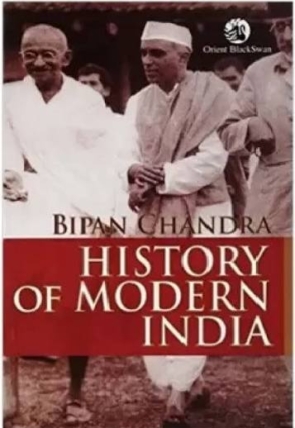
HISTORY OF MODERN INDIA 2021 EDITION FREE BOOK PDF

HISTORY OF MODERN INDIA 2021 EDITION FREE BOOK PDF
HISTORY OF MODERN INDIA FREE BOOK DESCRIPTION :-
History of Modern India presents an authoritative overview of the history of what was known as British India. The text is largely based on the author s research on nationalism and colonialism in India and also draws from the works of eminent historians of the period. Challenging and revising colonial and nationalist interpretations of history, this book moves away from a largely political narrative to a social, economic and religious history of modern India. It explains how conditions in India during the eighteenth century helped the British East India Company establish its rule in India. It also gives us important insights into the primary aim of colonial rule which was the economic exploitation of India through trade and investment. The topics are arranged thematically in order to showcase the various forces that went into the making of independent India. However, in the entire arrangement of themes, the chronology of the period is enmeshed innovatively with the various forces that evolved both as a cause and effect of British imperialist rule of the subcontinent. The book also provides a detailed account of the nationalist movement and introduces us to the contributions of different individuals who were behind the nationalist movement. A comprehensive textbook for students of history and interested readers, History of Modern India is essential reading for a broad based understanding of the making of modern India.
History of India can be dated as far as 5300 years ago. Modern Indian History is considered the history 1850 onwards. A major part of Modern Indian History was occupied by the British Rule in India. In this chapter, we’ll learn about Modern Indian History i.e. British Rule, Freedom Struggle, Independence and so on.
Content of History of Modern India By Bipan Chandra
This book covers 15 chapters on the modern period of Indian history. The details of chapters are as follow:
History of Modern India By Bipan Chandra (English Edition)
- The decline of the Mughal empire
- Indian states and society in the 18th century
- The beginnings of European settlements
- The structure of government and the economic policies of the British Empire in India, 1757-1857
- Administrative organization and social
- Cultural awakening in the first half of the 19th century
- Revolt of 1857
- Administrative changes after 1838
- India and her neighbors
- The economic impact of British rule
- The nationalist movement 1858-1905
- Growth of new India religious and social reform
- Movement 1905-1918
- Struggle of swaraj
- British conquest of India
History of Modern India by Bipan Chandra is a book that provides the readers with insights into the history of British India, and the factors that contributed to the independence of the country. Summary Of The Book Adhunik Bharat Ka Ithihaas English) provides the readers a great deal of information on the history of British India. Thiis English edition of History of Modern India is based on Chandraâ??s extensive study of colonialism and nationalism in the country. Additionally, he also includes insights from well-known historians of that time frame. This bookâ??s primary focus is on the forces, institutions, and movements during this period, instead of diplomatic and military events. Through the course of this book, Chandra also provides insights into the impact of British imperialism on the economic, social, and administrative life of Indian citizens. He also tells the readers about the response of Indians to this move by the British. Chandra also throws light on the political and economic scenario in the country during the 18th century, which made it possible for foreign merchants to conquer this land. The content of this book is presented in a thematic order, which helps the readers understand the material better. Adhunik Bharat Ka Ithihaas (English) contains insights into the factors that led to the development of a nation-wide struggle against the British rule. It also contains detailed information on the Nationalist movement, highlighting the contributions of several leaders.
Only registered users can download this book.
Please Login/Register first.
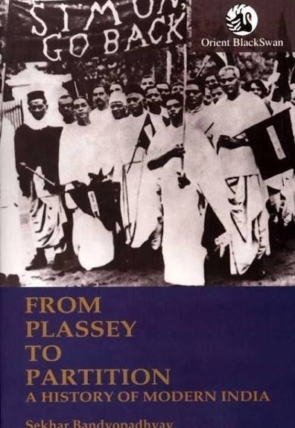
FROM PLASSEY TO PARTITION : A HISTORY OF MODERN INDIA 2021 EDITION FREE BOOK PDF
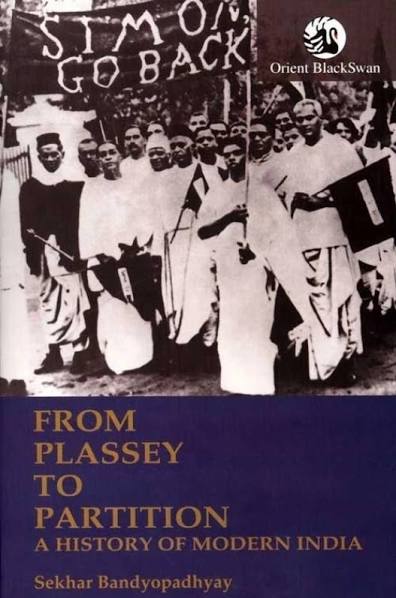
FROM PLASSEY TO PARTITION : A HISTORY OF MODERN INDIA FREE BOOK PDF
FROM PLASSEY TO PARTITION : A HISTORY OF MODERN INDIA FREE BOOK DESCRIPTION :-
From Plassey to Partition is an eminently readable account of the emergence of India as a nation. It covers about two hundred years of political and socio-economic turbulence. Of particular interest to the contemporary reader will be sections such as Early Nationalism: Discontent and Dissension , Many Voices of a Nation and Freedom with Partition . On the one hand, it converses with students of Indian history and on the other, it engages general and curious readers. Few books on this crucial period of history have captured the rhythms of India s polyphonic nationalism as From Plassey to Partition.
This book is now regarded as a major intervention in the historiography of modern India, and an authoritative account of the largest anti-imperialist movement in the world.
It traces India s colonial encounter, her nationalist longings, and her emergence as a sovereign, democratic republic, along with radical social transformations over two centuries.
And this enlarged edition offers a perceptive analysis of India s efforts towards modernisation and democratisation since Independence.
The book addresses important historiographical questions by taking cognisance of emergent perspectives adopted by social science scholarship over the last twenty-five years.
The book engages in debates on issues like political economy in eighteenth-century India, socio-religious reform and the nationalist movement.
It offers a detailed study and analysis of the freedom struggle through its Moderate, Extremist and Gandhian phases, and events like the Swadeshi, Khilafat Non-Cooperation, Civil Disobedience and Quit India Movements.
There is a focus on other strands of the nationalist movement from the revolutionary to socialist and other leftist groups, and the role of women and its various ideological contestations.
The newly added concluding chapter links contemporary debates about Indian nationhood with changes in society, economy and polity, from the years of state-directed planning under a one-party system to the emergence of a market economy in an era of predominantly coalition governments.
“synopsis” may belong to another edition of this title.
This book is now regarded as a major intervention in the historiography of modern India, and an authoritative account of the largest anti-imperialist movement in the world.
It traces India s colonial encounter, her nationalist longings, and her emergence as a sovereign, democratic republic, along with radical social transformations over two centuries.
And this enlarged edition offers a perceptive analysis of India s efforts towards modernisation and democratisation since Independence.
The book addresses important historiographical questions by taking cognisance of emergent perspectives adopted by social science scholarship over the last twenty-five years.
The book engages in debates on issues like political economy in eighteenth-century India, socio-religious reform and the nationalist movement.
It offers a detailed study and analysis of the freedom struggle through its Moderate, Extremist and Gandhian phases, and events like the Swadeshi, Khilafat Non-Cooperation, Civil Disobedience and Quit India Movements.
There is a focus on other strands of the nationalist movement from the revolutionary to socialist and other leftist groups, and the role of women and its various ideological contestations.
The newly added concluding chapter links contemporary debates about Indian nationhood with changes in society, economy and polity, from the years of state-directed planning under a one-party system to the emergence of a market economy in an era of predominantly coalition governments.
“synopsis” may belong to another edition of this title.
More than a survey, and much more than a thematically arranged narrative, From Plassey To Partition is an eminently readable account of the emergence of India as a nation. It maps a wide and often complicated terrain of historical happenings, their main players in groups and as individuals, and contexts that enable us to see the formation of a nation through documents of resistance and struggle, assimilation and rejection.
Only registered users can download this book.
Please Login/Register first.